
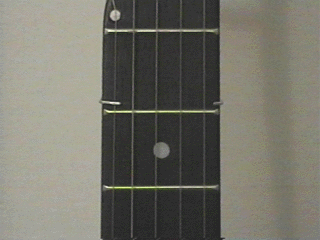
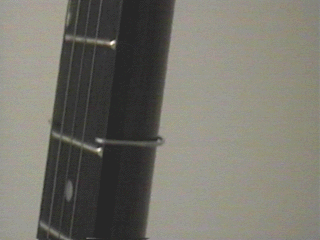
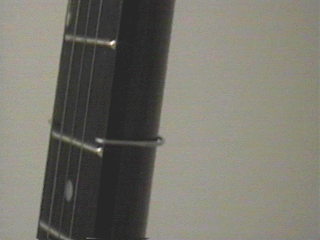
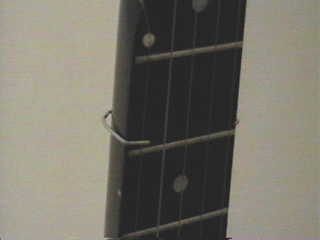
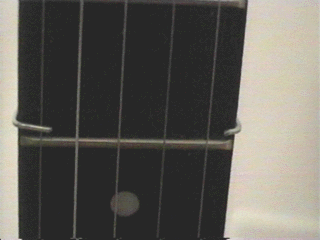
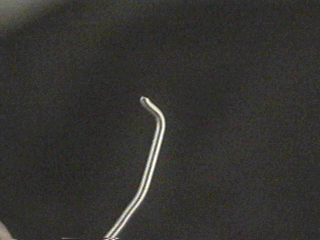
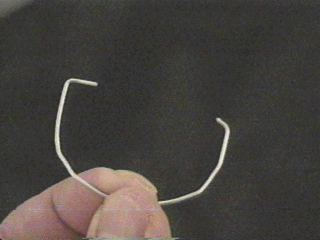
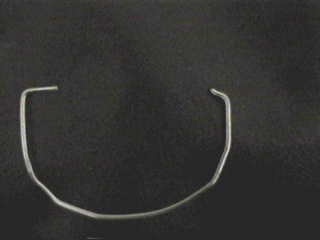
 |
 |
 |
| Front view of capo | capo from 1st string side | |
 |
 |
 |
| rear view of capo | capo, 5th string side | capo, front, closeup |
 |
 |
 |
| capo, closeup showing upturn of 1st string end | capo | capo, showing upturn at 1st string end |
I spent about 10 minutes the other day reconstructing a home-made 5th-string capo that I had originally made back in the 60's. It's a little hard to describe, but with the above pictures it should be reasonably understandable. I made it from nothing more than a paper clip!! (The larger of the 2 common sizes) -- I first straightened it by hand, then, using a pair of needle-nose pliers, I bent one end at a 90 degree angle -- just long enough to come over the edge of the neck and cover the 5th string. Then, I (by hand) bent the rest of the clip to approximate the curve of the back of the neck, leaving the other end sticking up way beyond the fingerboard by the 1st string. Note that the wire is not completely in contact with the neck all the way around. This allows for some springyness, which is what holds the capo in place. I pressed the wire in as tight as possible, to conform to the shape of the neck, and then bent the other end (1st-string side) over the edge of the fingerboard. Then, using the needle-nose pliers again, I bent that end up very (very very) slightly, just a tiny bit in from the edge, (in the picture, you can see just the hint of an upturn) and then cut the wire right at that bend. This end is very short and the upward lift is almost undetectable. The end has to be small enough so that it doesn't interfere with playing the 1st string. The purpose of the slight upward bend is to facilitate sliding it around the neck without scratching. I filed both ends smooth and slightly rounded. Bill Palmer suggested covering the wire with a piece of "spaghetti" insulation to prevent it from indenting the back of the neck. As I recall, my original capo (~35 years ago) did indent the back of the neck slightly if left in place for long periods of time (days or weeks). This should eliminate the problem. To use this capo, all I do is place the flat end over the 5th string and slide the other end around the neck, catching the tiny end over the 1st-string edge of the fingerboard. It took a little experimenting to get the shape and length right (it actually took me 2 paper clips), but even with all that waste it's still rather inexpensive. The total time involved, including going down to the basement to find my pliers and a file, was less than 10 minutes.